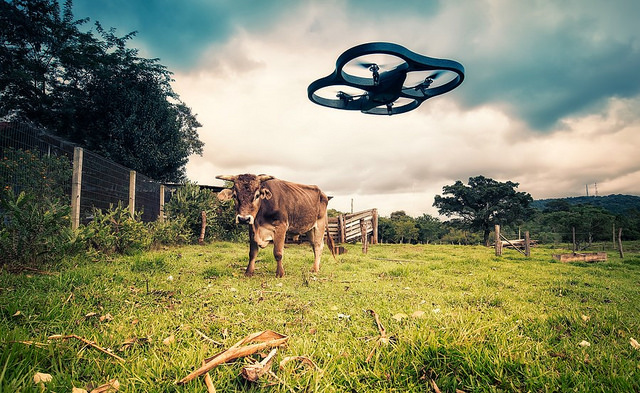
Photo courtesy Lima Pix
The Internet of Things is here, in a fledgling state, but arriving with all the speed and disruption that the worldwide web and Web 2.0 did in previous decades. With the Internet of Things, everyday objects are now connected to the global network, providing data on everything from ambient temperature in a domestic bedroom to the temperature of a nuclear reactor core in a utility-scale electrical power plant. The McKinsey Global Institute estimates a market size of $6.2 trillion by the year 2025. According to an article by the the Siemens corporation, “The market research and consulting firm International Data Corporation (IDC) estimates that 32 billion objects will be connected to the Internet by 2020, and that these will produce ten percent of all the data generated worldwide”.
Of course this increased influx of data will be broken down along traditional industry lines: there will be an IoT sector for residential construction, for agriculture, healthcare, and manufacturing. These systems will likely be a blend of proprietary and open source solutions, stacks of small embedded hardware, coupled with sensors and actuators, streaming data to the cloud for processing, storage, and analysis, then acting on that data through various control systems like heating and cooling, water pumps, and medical devices. In some cases these systems will greatly enhance efficiency and productivity, allowing for further mechanization and the greater integration of electromechanical devices (ie robotics) into industrial processes. In other cases these systems may add greater capital expenditure via deployment and maintenance costs accompanied by insignificant ROI; these systems will fail. These are all things that will play out in the IoT marketplace over the coming decade. There will be winners and losers.
At first blush, open source software and hardware seems poised to be a big winner in the realm of IoT. Ubuntu is currently working on Snappy Core, “an app store for open robots.” And just recently Google announced Brillo, what they are calling the “underlying operating system for the internet of things”, which will be Android-based and at least have some open source components. Arduino microcontrollers and similar open embedded systems are going strong and continuing to grow in popularity, versatility, and diversity. Is open source software and hardware on the verge of taking over the world?
Not so fast. For the mega-corporations bringing these products to market, open source may be a convenient development approach, and may have a familiar appeal after years of greenwashing faux environmental initiatives, but it bears no resemblance at all to Richard Stallman’s philosophical stance that “non-free software is a social problem and free software is the solution.”
While open source flourishes on the cloud, in your Android handset, and even in unexpected places like Facebook and Microsoft, the smartest of the proprietary mega-companies have long since realized that the true value lies in the data sets that end-users generate while interacting with the software. Facebook and Google are poster children for the new corporatizating of private data; but now as these data tracking systems move into the physical world, tractors are spying on farmers, sending back their data so that georeferenced industry-specific knowledge can be aggregated and analyzed, with the end-game being the complete robotization of the factory farm.
The question remains: who will own the software and hardware systems as they are deployed into the world in the coming decades? Clearly, however, it doesn’t just matter who owns the hardware-software, but ultimately and perhaps most importantly, who will own the reams and reams of data that will begin to flow as the Internet colonizes the planet?